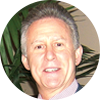Summer is finally on the horizon. While many students can relax and enjoy the much-awaited warm weather, most chiropractic students remain hard at work. We chiropractic students are making sacrifices in order to equip our minds with the fundamentals of anatomy, neurology, physiology, biochemistry and nutrition.
Yet the summer, in particular, is a seemingly difficult time for chiropractic students. Relationships strain, study material flows and outdoor activities relentlessly tempt. It's a testament to the caliber of chiropractic students that they continue to study hard despite the distractions. The persistence of students during the summer months is a powerful example of the commitment we have to our future patients.
One thing that always has been true about the chiropractic profession is our commitment and compassion for our patients and, more importantly, their commitment to us. As a profession, we love our work because we appreciate our patients. But the chiropractic profession is at a critical moment in its history. Despite the external struggles and internal debates, the forces pushing the chiropractic profession toward opportunity, integration and broad-scale acceptance seem to be in place. In the new age of health care integration, students of chiropractic must realize our training in wellness must expand beyond just our patients and out into the communities in which we live. It is this realm the chiropractic profession is most prepared to enter and earn the cultural authority it has lacked for far too long.
As a student, it can be frustrating to be committed to a profession that has yet to scratch the surface of its potential after a century of existence. Our education is too well-rounded and too rigorous, and our holistic model too essential to pump students into a health care model in which chiropractic still is underutilized. The ripples are there, but it's time the members of this profession started making waves.
We must internalize the notion that we are the future health care leaders of tomorrow. It's time we push our colleagues to include larger circles of people in their visions of wellness. Growing numbers of individuals continue to suffer from preventable afflictions of stress, obesity, diabetes and chronic musculoskeletal pain. In America, we are overmedicated, overworked and increasingly depressed. Our health has been hanging in the balance and unfortunately, the scale has tipped the wrong way for far too many individuals. I firmly believe chiropractic students are ready and willing to take on these formidable health challenges in their communities. There is no better time than now for chiropractic students and chiropractors to step up and take initiative for change.
Recently, I became president of the Public Health Club at New York Chiropractic College (NYCC). The vision the other leaders and I have for the club is simple: to empower and mobilize chiropractic students to lead and become chiropractors who lead in their communities. My vision is that all chiropractic students will graduate with a confidence not only to adjust, run a successful practice and heal patients, but also to maintain a larger vision of working to better their communities. It's my hope and desire to motivate chiropractic students to think beyond their exams and into the realm of leadership and community action.
For this summer semester, the club is planning to give health talks in the community, organize a smoking-cessation program on campus, raise awareness of local community-supported agriculture and organic co-op programs, bring attention to the wrongful use of performance-enhancement products such as steroids, and generally serve as a venue whereby student leaders can come together and work to bring about health improvements in the community.
In addition to club activities, there will be sponsored visits to local practitioners on the leading edge of evidence-based, integrated care. We even organized NYCC teams to participate in the local "Relay for Life" for the American Cancer Society on May 31. I hope the NYCC Public Health Club can serve as a template for other schools to emulate and improve upon so our efforts will touch their local communities as well.
Change happens as a result of unified action. No matter where our differences might lie philosophically, we can cooperate in serving our patients from a public health perspective. It's no surprise the students of our profession have a wealth of experience and expertise when it comes to organizing events centered on health promotion and wellness. Within a few short weeks, the officers and I have developed an early action plan to start making differences, both large and small, on campus and in the community.
It's interesting to learn that the word chiropractic roughly translates from Greek to hands concerned with action. What a wonderful concept to think about! It's time we lived up to our social contract, embraced the essence of chiropractic and began getting those hands dirty in our communities.
Many club members have joined the American Public Health Association's Chiropractic Health Care Section. The APHA is the nation's premier public health association and chiropractic students and chiropractors interested in the leadership and service role of this profession in their communities have become participants. Students and chiropractors interested in joining APHA can contact Dr. Jonathon Egan at "> or join through www.apha.org (selecting Chiropractic Health Care section as primary affiliation). If you have "hands concerned with action," we welcome you to join us in our efforts on your campuses, in your communities and through organizations such as the APHA.
Click here for previous articles by Rand Baird, DC, MPH, FICA, FICC.





